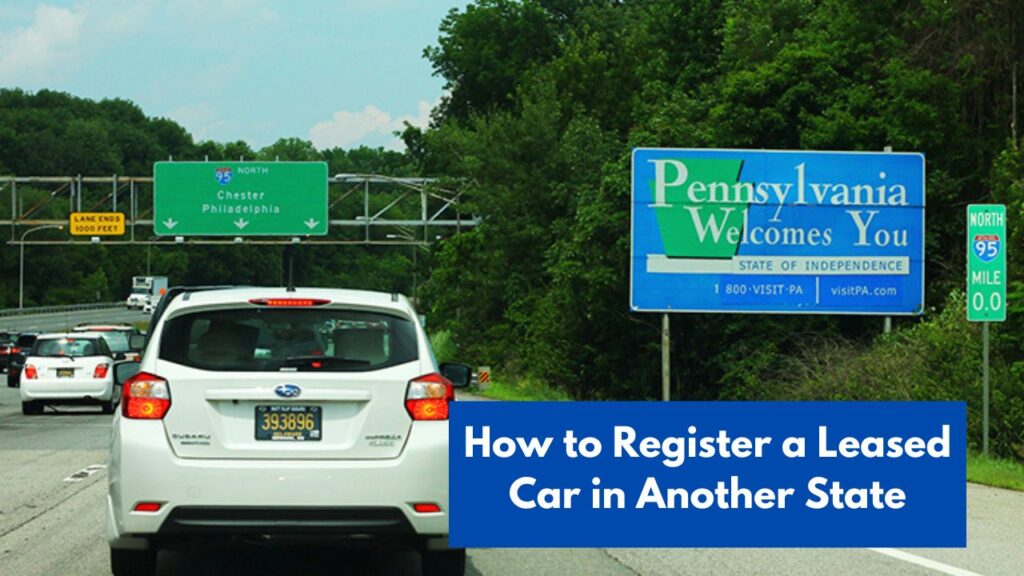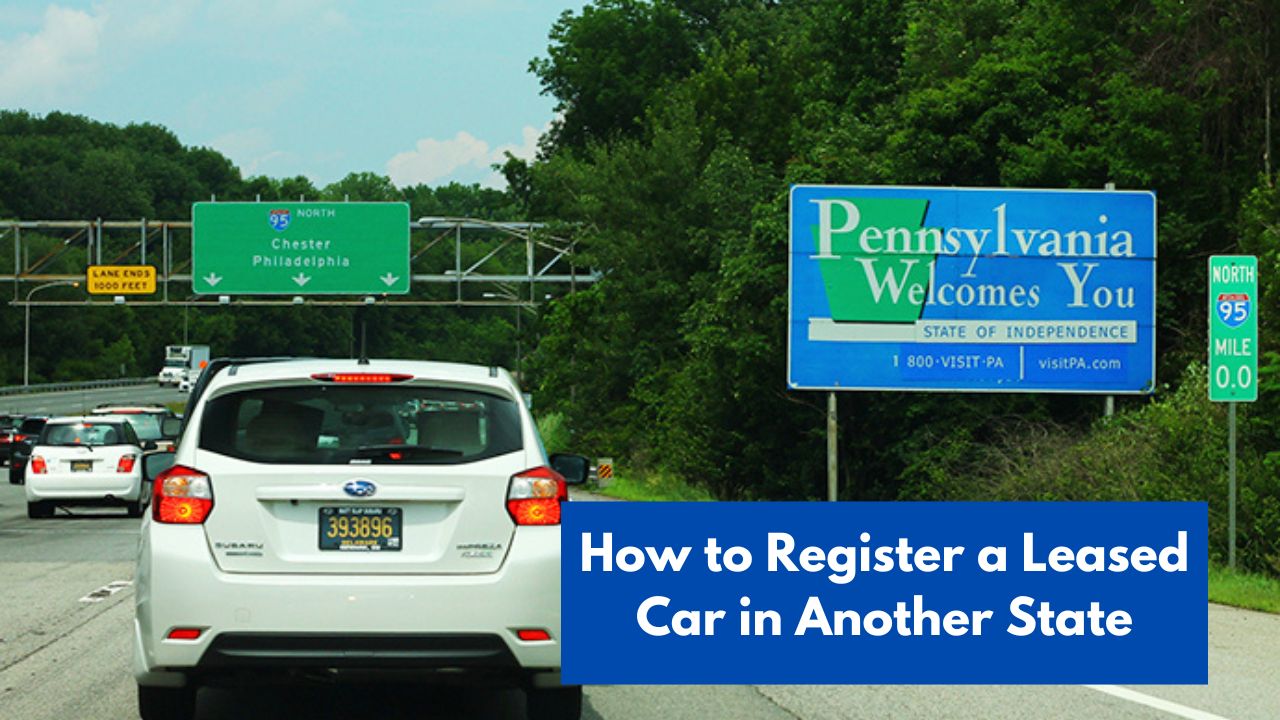Moving to another state involves a long list of procedures, and if you rent a vehicle, registering it in your new state can be complicated. Unlike your own vehicle, a rental car belongs to the rental company. This means you’ll need to coordinate with them and comply with the laws of your new state.
This guide details every step of the process, covering documentation, legal considerations, and deadlines to help you avoid delays or fines.
Basics of Leasing and Registration
When you lease a car, you rent it long-term from the leasing company, which is the legal owner. You own the vehicle and are responsible for registration and insurance, but you do not own the title. This distinction is important, as registering a vehicle typically requires a title or the title holder’s authorization.
Each U.S. state has its own DMV or equivalent agency (e.g., BMV, MVD, RMV), and each has different rules for registering out-of-state vehicles, especially leased ones. For example:
- Some states require emissions testing, others do not.
- Some require physical vehicle inspections.
- Some calculate taxes differently, especially when moving from a state without a sales tax (such as Oregon) to one that does (such as California or Texas).
How to Register a Leased Car in Another State

Step 1. Notify the leasing company as soon as possible
The leasing company plays a critical role in out-of-state registration. Without their cooperation, you will not be able to legally register your vehicle.
The documents you should request are:
- Written permission to register the vehicle in another state (some lease agreements restrict this).
- A copy of the vehicle title or authorization from the title holder.
- A power of attorney (POA) that grants you or a DMV agent the authority to act on your behalf during registration.
- A signed letter of authorization, if required by the DMV.
- Updated address information, if required by the leasing company.
Larger leasing companies (e.g., Toyota Financial Services, Honda Lease Trust, GM Financial) typically manage this process through a third-party registration or title service, but you must initiate it.
Step 2. Research DMV requirements in your new state.
Visit your new state’s official DMV website. Find information about:
- Vehicle registration for leased vehicles
- Out-of-state vehicle transfer procedures
- Required forms and documents
- Registration deadlines (generally 30, 60, or 90 days after establishing residency)
- Whether in-person appointments are required
For example:
- The California DMV requires an emissions inspection and VIN verification for all out-of-state vehicles.
- The Texas DMV requires a vehicle inspection before issuing registration.
- The New York DMV requires the completed Form MV-82 for leased vehicles, along with proof of insurance and tax payments.
Also, check for differences in insurance minimums, as you may need to update your policy before registration.
Step 3. Gather all required documents
You’ll need to gather all the necessary documents before going to the DMV or mailing your application. Here’s a complete list:
Personal Documents
- Driver’s license from your new state (some states require a license before registration)
- Proof of address (utility bill, lease, mortgage, etc.)
Vehicle and lease documents
- Vehicle registration from your previous state
- Lease agreement
- Odometer statement (varies by state and vehicle age)
- VIN verification form (if required)
- Proof of insurance that meets the new state’s minimums
Leasing company documents
- Copy of title (or electronic confirmation from lienholder)
- Power of attorney form (signed by the leasing company)
- Authorization letter, if required by the DMV
Check to see if your new state requires Form HSMV 82040 (Florida), MV-1 (Georgia), REG 343 (California), or similar state forms.
Step 4. Complete Emissions and Safety Inspections
The U.S. Department of State requires all cars to be registered before they can be driven. Requirements depend on where you live, and you may even see some states requiring emissions and smog checks.
For example, Florida, Hawaii, and Michigan don’t require these tests, but California, Georgia, and Massachusetts do. Some states, like Colorado, only require annual tests or inspections in certain areas. Contact your local motor vehicle authority to be completely sure which tests your car must pass.
If you’re moving for the first time, make sure you know the regulations and have all the information before you move. Don’t let an unexpected tax surprise you and ruin your move.
Step 5. Pay Registration Fees and Taxes
Registration Fees
- These are standard in all states and may include:
- Title fee
- Registration fee (often based on weight or vehicle type)
- Registration fee
- Inspection fee (if applicable)
Taxes
Here’s where things get complicated. States may charge:
- Sales tax: You may have to pay sales tax on the vehicle, even if you already paid it in another state.
- Use tax: This may apply if sales tax wasn’t charged in the previous state or if the rate is lower than in the new state.
- Excise tax: Some states charge an annual excise tax on the vehicle based on its value.
Important: The leasing company is usually responsible for paying these taxes upfront and incorporating them into the lease payments. However, some DMVs require the lessee (you) to pay an additional tax. For more information, contact your DMV and the leasing company.
Step 6. Submit the application and complete the registration
After inspections and gathering all the documentation:
Choose the method
In person: This is usually required for the first registration.
By mail: Sometimes allowed if you have all the necessary documents from the leasing company.
Through a third-party registration service: Your leasing company may use one to expedite the process.
Submit your forms, fees, and documents, and receive:
Registration certificate
- License plates (or instructions for transferring existing ones)
- License plate or windshield stickers
Step 7. Notify your insurance company and leasing company about your move
Moving companies have no influence on whether the car you’re shipping is a leased car. You just need to contact them, schedule a transport date, and prepare the car for shipping.
If transporting your car is a concern and you can’t or don’t want to drive to your new location, the best way to move stress-free is to hire a licensed, professional moving company. Your car will be in good hands, and you can choose between open or enclosed trailers, as well as different delivery methods. Once your vehicle is registered:
- Send a copy of your new license plate to the leasing company.
- Update your insurance policy to reflect your new status (required by law).
- Review the terms of your lease to ensure your mileage and usage still comply with the agreement.
Special Considerations
Military Personnel
Active-duty military personnel may not need to re-register their leased vehicle in the new state if they maintain legal residence in another state. However, they may need to provide proof of military status and a valid registration from their home state.
Moving or Temporary Assignments
If you are moving temporarily for work or school, you may not need to register it in the new state. Check with your leasing company and the DMV about exceptions.
Conclusion
Registering a leased vehicle in another state requires coordination and attention to detail. You’ll need to work closely with your leasing company, understand your new state’s regulations, and ensure all required documents are submitted accurately and on time.
Start early, review each step, and follow up with the DMV and the leasing company to avoid delays. With the right approach, you can navigate the process efficiently and keep your leased vehicle in full compliance with state laws.





